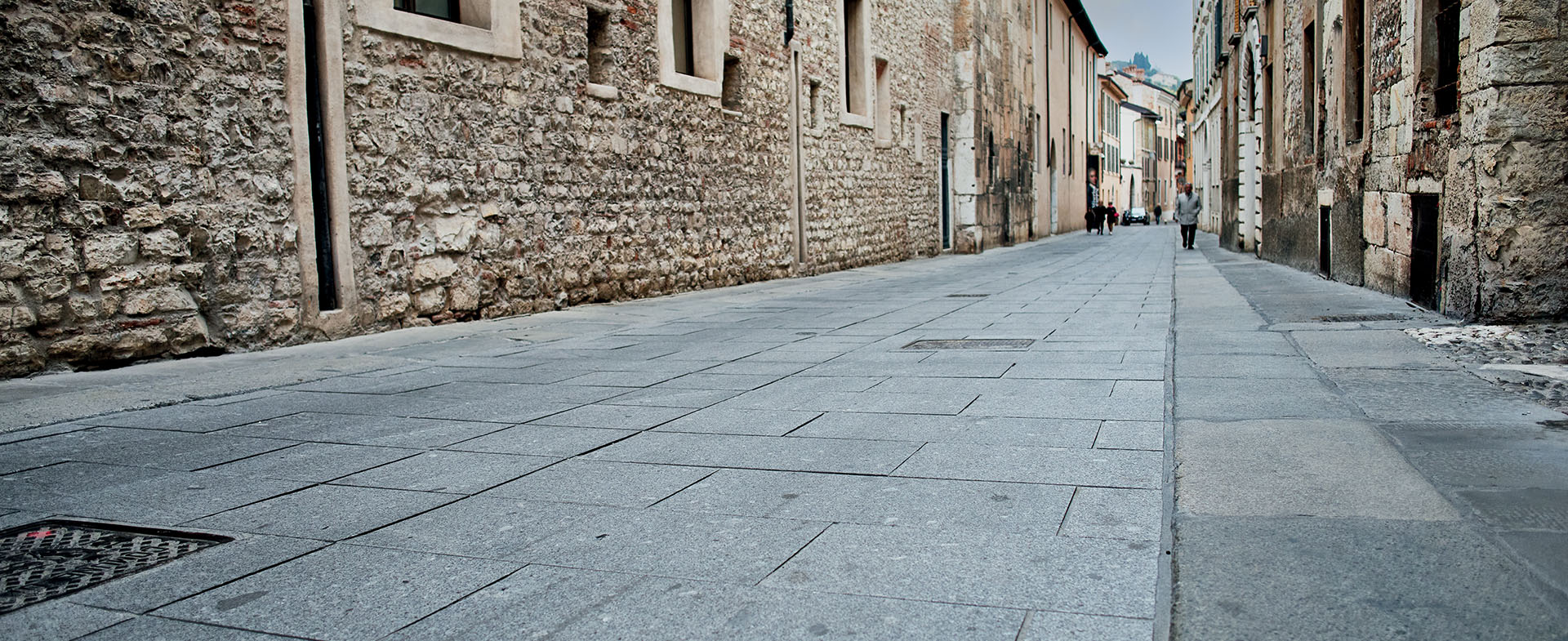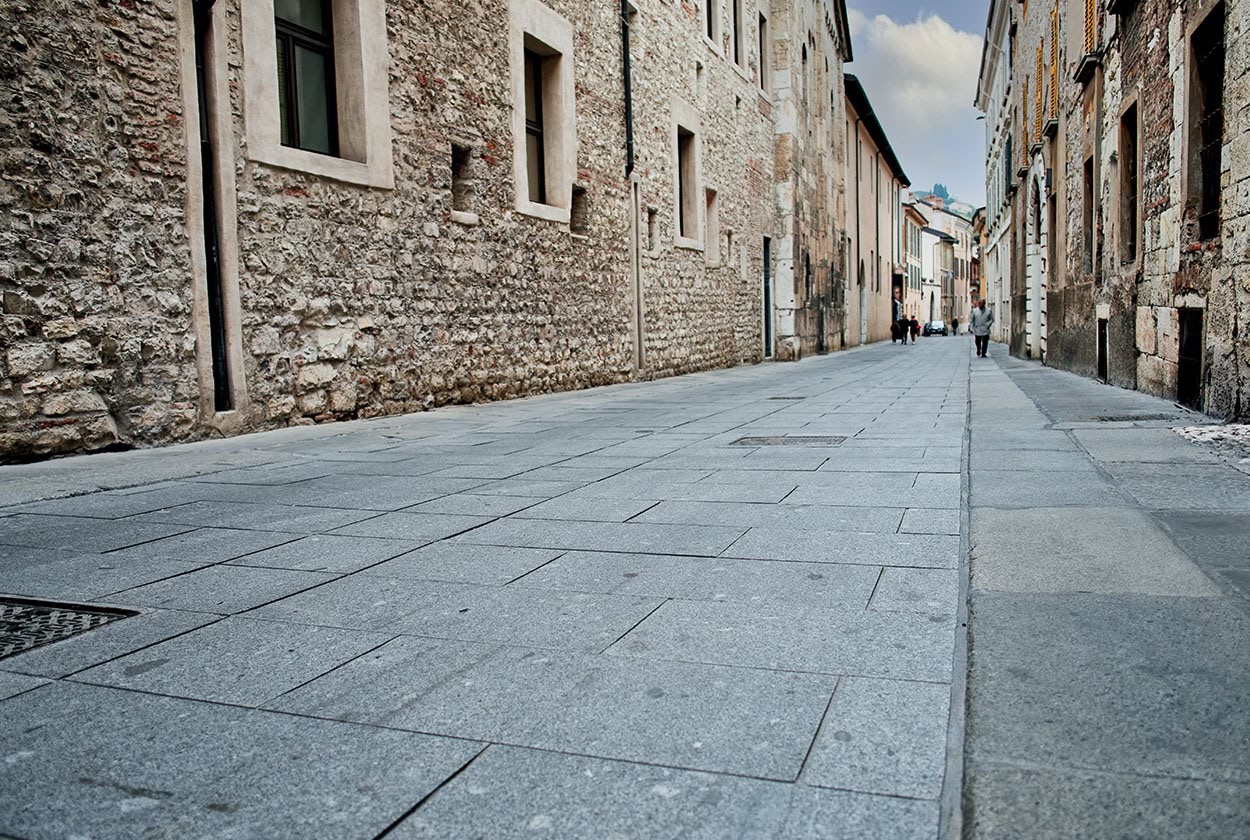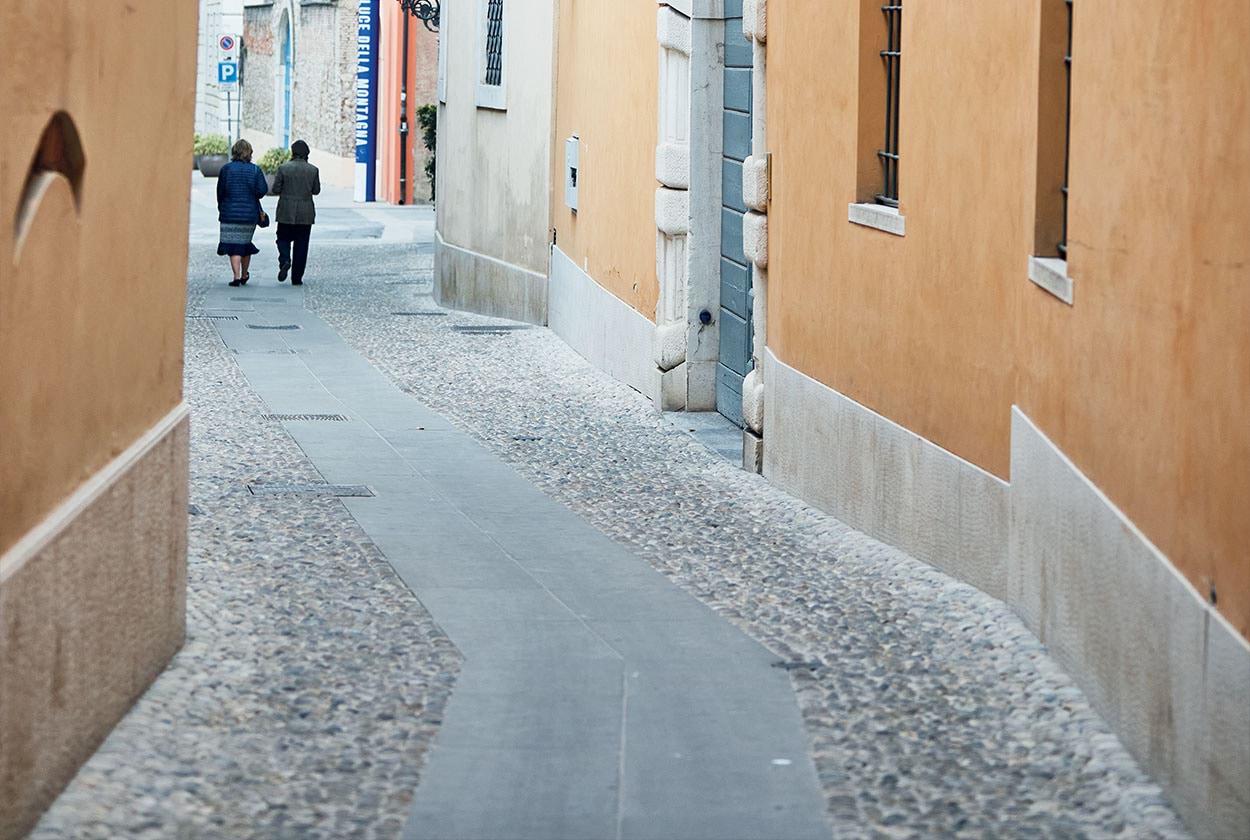

Projects
/
8/2/2023
The kilometre of beauty
Products from the mapestone line were used for the new stone paving in Via dei Musei in Brescia
In the context of Bergamo Brescia Capital of Culture 2023 inaugurated the new paving of Via dei Musei in Brescia, made with the Mapestone system.
On the eve of the celebrations to kick off Bergamo Brescia’s year as the Italian Capital of Culture 2023, the new paving in Via dei Musei in Brescia, which played a pivotal role in the bid, has been officially unveiled. The work restored the stone paving along the Decumanus Maximus of ancient Brixia (so was the city called in ancient times) to its original splendour: today, this stretch of road is still overlooked by splendid ruins, with elegant columns in Botticino marble, the Sanctuary, the Capitolium and the Theatre, and the statue of Vittoria Alata (Winged Victory). Via dei Musei is, in fact, a road in Brescia where visitors can admire, one after the other, famous monuments in the city’s Roman archaeological park, a journey through a UNESCO World Heritage site in 2011, and the San Salvatore – Santa Giulia monastery complex. The latter is now the home of the Santa Giulia Museum and a veritable treasure chest of extraordinary places from the Longobardic and medieval eras of the city of Brescia, as well as the home of nationally and internationally acclaimed exhibitions.
The refurbishment of Via dei Musei
Each side of the road is lined with the former homes of the Brescia aristocracy built between the 16th and 18th centuries, one of which is Palazzo Martinengo, a museum highly appreciated as much for its permanent collection as for its temporary displays of important exhibits. Which is why the former Mayor of Brescia, Emilio Del Bono, affectionately renamed the road “the kilometre of beauty”. Located in the restricted traffic area of the city, up until 2021 Via dei Musei was a strip of asphalt, so certainly not in line with the monumental richness of the area. To promote and enhance the itinerary, and to coincide with the celebrations for Bergamo-Brescia Italian Capital of Culture 2023, the City Council commissioned Brescia Infrastrutture to design the refurbishment of Via dei Musei as part of a more extensive plan to pedestrianise the old city centre and make it more citizen friendly. The project included the replacement of the asphalt with diorite stone paving slabs and blocks of porphyry in one section, and restoration work on the Sarnico sandstone pavements, repairs to the joints and the localised replacement of any compromised elements using the “touching-up” technique.

New resistant, durable and beautiful floors
The new road paving was turned into a mainly pedestrianised area with vehicle access restricted to local residents and vehicles serving the museums and local businesses, with occasional access also for heavy-goods vehicles. Because of the importance of the place, the tight schedule, the nature of the mechanical stresses and loads, which at times can be quite demanding, along with potentially harmful environmental conditions such as freeze/thaw cycles and the use of de-icing salts, the contractor commissioned to carry out the work proposed using the MAPESTONE SYSTEM, specifically formulated to create long-lasting and cost-effective urban stone paving with low maintenance requirements. The MAPESTONE SYSTEM is made up of products from exposure class XF4 and complies with the requirements of European standard EN 206-1, thereby guaranteeing the durability of paving. Stone road surfaces installed using this system will only require maintenance work after a certain number of years thanks to their resistance to freeze-thaw cycles, de-icing salts and rain, and the mortars employed tend not to crumble and maintain their properties over the years. They also have the capacity to absorb mechanical loads and stresses caused by the passage of vehicles, including heavy goods vehicles, and dangerous hollows caused by structural subsidence do not tend to appear. MAPESTONE TFB 60 pre-blended mortar was applied in a 5 cm thick to install the stones slabs, while the joints (average width 10 mm) were grouted with MAPESTONE PFS2 FLEX, a pre-blended mortar with low modulus of elasticity for grouting joints in architectural paving made of slabs, blocks and cobblestones. Correct installation was monitored by taking samples of the mixes directly on site, indispensable to measure and verify the specified mechanical properties were achieved and to open the road to traffic quickly, as required by the City Council, without having to wait the 28 days prescribed for mortars mixed on site.

Partial view from a side-street of Via dei Musei in Brescia, which was also refurbished with a central strip of Diorite stone paving slabs and classic cobblestones along the sides.





